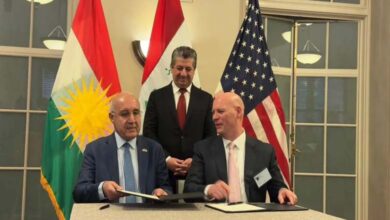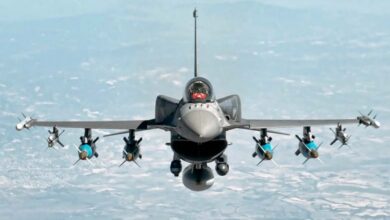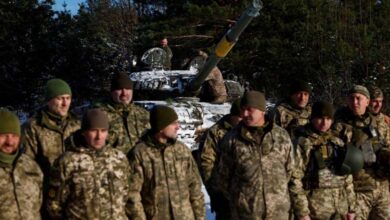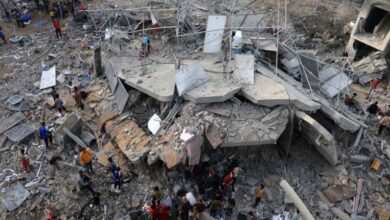Iran’s Fordow… a secret beneath the mountain impervious even to the most powerful bombs
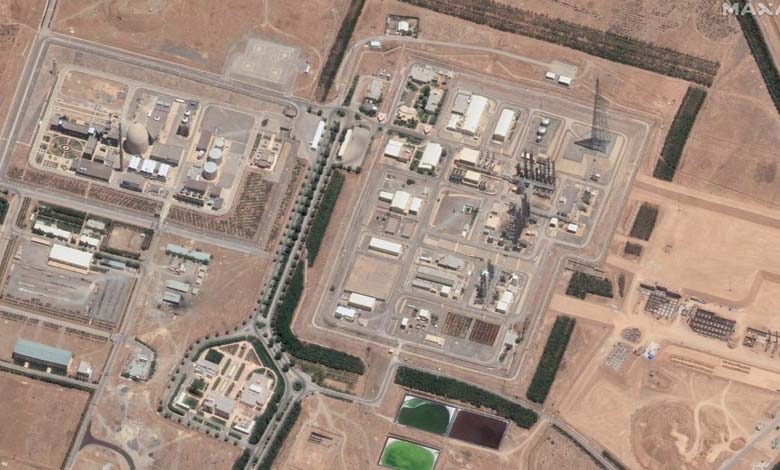
When even the most powerful known aerial bombs cannot penetrate a mountain, whatever lies beneath it must be a highly strategic secret.
This is the case with Fordow, Iran’s uranium enrichment facility buried deep within the mountains near the city of Qom. The nature and role of this site in Iran’s nuclear program have remained a constant source of speculation, and it is now at the forefront of the escalating confrontation between Tehran and Tel Aviv.
-
Following Approval from Iran and Israel: Ceasefire Negotiations in Lebanon Enter Final Stages
-
No Ceasefire in Gaza until De-escalation between Iran and Israel
Israel and Western governments have long accused Iran of seeking the capability to build a nuclear weapon, should it decide to do so. Iranian officials, however, insist that their nuclear program is solely for civilian purposes.
So what do we actually know about this facility? And why is it considered a central point of contention between Tehran and the West?
Five tunnels cut through the mountains, a massive support structure, and a wide security perimeter — that’s what the latest satellite images have captured around the Fordow facility.
This fortified and secretive site, located near Qom, has been the subject of much speculation about its true size and function since its existence was first revealed in 2009.
-
Troubles and Crises: International Economy Affected by Iran and Israel Events
-
Anticipation and Preparations in Israel for a Double Attack from Iran and Yemen
What do documents reveal about Fordow?
CNN reports that much of what is known about Fordow comes from “confidential Iranian documents seized by Israeli intelligence several years ago.”
Estimates suggest the facility’s main halls lie 80 to 90 meters underground, making it resistant to any known aerial bomb in Israel’s arsenal, and rendering an airstrike nearly impossible.
As Iran has been subjected to a series of Israeli strikes since last Friday, some analysts believe that Fordow might be the site Tehran would use to turn its enriched uranium stockpile into a nuclear weapon.
-
Israel’s Strikes on Iranian Nuclear Facilities: Conflicting Assessments and Unclear Outcomes
-
Israel and Iran: Everything You Need to Know About The Fire Saturday
Despite repeated Israeli attempts to strike the site in recent days, the International Atomic Energy Agency (IAEA) confirms that Fordow has not sustained any notable damage so far — either due to limitations or restraint in the attacks.
Even though Iran consistently claims its nuclear program is peaceful, Fordow remains at the heart of international skepticism.
In 2009, U.S. President Barack Obama called the facility “inconsistent in its size and configuration with a peaceful program.”
-
Israel Vows Retaliation as Iran Issues Threats — Red Lines Crossed and Strikes to Continue
-
Israel Launches Massive Strike on Nuclear and Missile Facilities in Iran
Construction origins
Satellite images suggest that construction began in 2004, showing two square white buildings at what are now the tunnel entrances. However, the IAEA says it has evidence that work started as early as 2002.
David Albright, head of the Institute for Science and International Security in Washington, says Fordow was originally part of what he calls “a shelved nuclear weapons program from the early 2000s.”
He noted the idea was for Iran to produce weapons-grade uranium at the site, using low-enriched uranium from its civilian nuclear program.
-
Is an Attack Imminent? US Newspaper Reveals Israeli and Iranian Preparations
-
In Iran’s Eid Sermon: The U.S. and Israel Present with Warnings
By 2009, a large external support structure had already been built, and excavation work was underway for what experts believe is a ventilation shaft. This shaft was later disguised, according to CNN.
Iran told the IAEA in an October 2009 letter that building the facility underground was in response to “military threats against Iran.” Fordow was described as an emergency backup to the nearby Natanz facility, which Iran said was under threat of military attack.
Iran informed the IAEA that the facility could hold up to 3,000 centrifuges.
-
“Surprise” in Israeli Attack on Iran: Advance Warning of Date and Targets?
-
Details of Iran’s “Recruitment” of an Israeli and His Girlfriend to Carry Out an “Assassination” Operation
The nuclear deal and Israeli accusations
The risk posed by Fordow was temporarily reduced following the 2015 nuclear deal (JCPOA), which required Iran to remove two-thirds of the centrifuges from the facility and withdraw nuclear material.
But that changed when U.S. President Donald Trump pulled out of the deal in 2018.
That same year, Israeli Prime Minister Benjamin Netanyahu revealed more details about the facility after his country’s intelligence services seized over 55,000 documents from what he called Iran’s “atomic archive.”
-
Leaks Reveal Israeli Preparations to Strike Iran and U.S. Concerns
-
In Case of an Israeli Attack: Source Discusses Iran’s Plan and Target Bank
These documents included detailed blueprints of Fordow and its objectives: “producing weapons-grade uranium as part of Iran’s nuclear weapons program, enough to build one or two nuclear weapons per year.”
Iran’s then-deputy foreign minister Abbas Araqchi called these claims “childish” and “ridiculous.”
More recently, the IAEA reported that Iran had increased its uranium enrichment at Fordow to 60%, calling it “deeply concerning” — particularly as Iran is the only non-nuclear state to do so.
According to the Institute for Science and International Security, Iran could, in just three weeks, convert its current 60% stockpile into 233 kg of weapons-grade uranium — enough for nine nuclear bombs.
-
Iranian Missiles on Israel: Launch and Interception Costs
-
Will Iran Abandon Its Revenge Against Israel in Exchange for a Gaza Ceasefire?
Protected even from the “largest bombs”
But destroying the facility from the air appears nearly impossible. Israeli Ambassador to the U.S., Yechiel Leiter, said only one bomb could potentially do it — the U.S. GBU-57, a massive ordnance penetrator that can only reach 60 meters underground, less than Fordow’s estimated depth.
According to the UK-based Royal United Services Institute (RUSI), even that bomb would require multiple strikes at the same point to penetrate the fortifications and can only be launched by American B-2 stealth bombers — which Israel does not possess.
-
Intense Cyber War Between Israel and Iran
-
Washington Tests Military Capabilities Amid Escalation Between Israel and Iran
RUSI explains, “Even GBU-57 bunker-busters cannot reach Fordow, with a maximum penetration depth of only around 60 meters.”
CNN military analyst Cedric Leighton believes the most realistic way to disable Fordow would be to target its tunnel entrances or its ventilation and power systems, potentially paralyzing it for months.
Despite its key role in Iran’s nuclear program, many experts believe Fordow is just one part of a much larger and complex puzzle.


